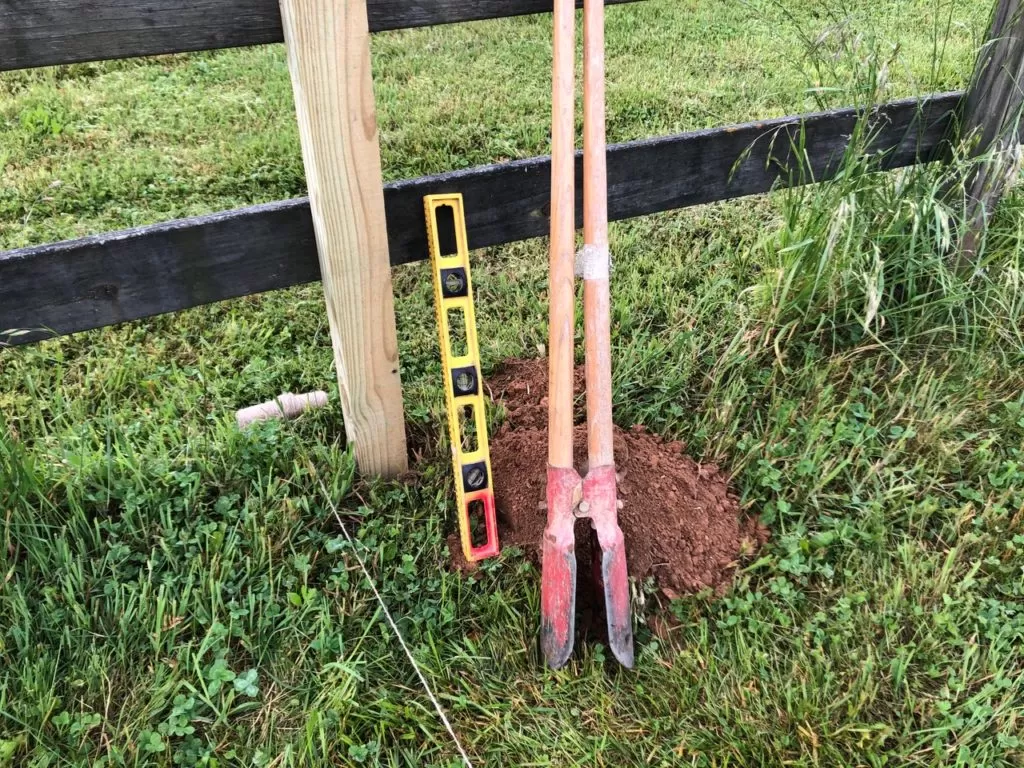To Build a Fence
Trust me, I never intended to build it myself.
A sudden spring flood had deposited three inches of sandy silt on our three existing pastures, effectively choking out the young grass Leigh Ann’s horses depend on during the summer months. While the reasons could be debated, the fact is Cane Creek now experiences a 20-year flood every three or so years. Knowing a third horse might be arriving here soon, we decided to fence off a higher section of our hay field for a new grazing pasture.
The pasture, however, would require a protective shelter for the horses, plus 640 feet of new fencing, meaning 80 holes, 80 posts, 240 boards, 960 nails, and two steel gates.

Getting someone to build it, however, – or even to help me build it – proved problematic.
For a big construction firm, our job was too small, and our two local fencing companies are now booked several months in advance. And think you can find a high school kid who wants to work after school or Saturdays for fifteen bucks an hour?
That’s a waste of your time….

My grandfather taught me how to build a fence and drive a Farmall Model M tractor even before I had a driver’s license. He handed me a post hole digger that looked like two spades hinged together with a worn piece of tape wrapped around one handle as a depth gauge. I’ve had my own for several years and continue to use it, but the idea of digging 80 holes by hand certainly has less appeal to me now, especially if I wanted to finish our pasture project anytime soon.

And so, I invested in a tractor-powered post hole auger, and soon wondered why I hadn’t bought one years ago. Mounted on the rear of my Kubota tractor, it sliced through the soil like the proverbial knife through butter. Of course, it still meant that I had to climb in and out of the tractor 80 times, lift 80 pressure-treated posts up, then drop, level, and tamp each of them in a hole, but it saved me so much energy that I lasted longer each day than I would have digging them by hand.
Which is why I continue to understand why Gustav Stickley, Elbert Hubbard, Charles Limbert, and so many others embraced The Machine. They elected to follow Frank Lloyd Wright’s advice when in 1901 he called upon the Arts and Crafts leaders not to reject The Machine, but to control it, using it for more mundane, repetitive tasks in order to free the craftsman for more satisfying, creative work.

Motivated to complete my fencing project before the mild spring weather turned hot, I plugged away last weekend, using an air-powered nailer to attach each of the pressure-treated fence boards. When it came time to hang the final gate, however, I was too far away from an outlet to use my electric drill. Instead, I dusted off a hand drill I have owned since 1967 called a brace-and-bit. In my lifetime I estimate I have broken, lost, or worn out more than a dozen electric and battery-powered drills, but my 54-year-old hand-powered brace-and-bit has never let me down.
Michelangelo once said something to the effect that before you can become a sculptor, you have to learn anatomy.
Before you become too reliant on power machinery, you better learn how to use a hand tool.
Until next week,
“The life so short, the craft so long to learn.” – Hippocrates
“The dog took comfort in the fire, lying at full length close enough for warmth and far enough away to escape being burned.” – Jack London, from “To Build a Fire” (1902)
Bruce
